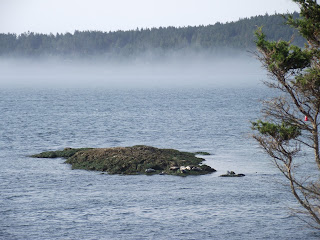
A southern resident killer whale calve was spotted with new mom L91 (AKA Muncher). This is the 5th baby born to the southern residents since December 2014. This is exciting because this births follow a two year period where no orca babies survived. The new baby is L122.
The southern residents still face many hardships, however. One of which is their access to chinook salmon. Chinook salmon are endangered, but this is the staple of the orca's diet. You might be wondering why they do not choose to eat the other species of salmon in the area. While the answer is not fully understood, many scientists believe it has a social component for the killer whales. Killer whales have very tight knit social groups, and the practice of hunting for chinook salmon has been passed down for generations of whales, which could be playing a role in their unwillingness to switch salmon species. Other reasons could include the fat content or nutritional value of the chinook salmon. In other words, if eating one chinook salmon will give them the same nutritional value as eating 5 coho salmon, then its "more bang for your buck" to spend the energy hunting chinook rather than another species.
Another obstacle the southern resident killer whales face is the bioaccumulation of toxic chemicals in their fatty tissues. These toxins are passed on to offspring from the mothers through lactation. This is often why a mothers first offspring will not survive- they are getting a large amount of toxins that has built up over the mothers lifetime.
Finally, something I was able to witness firsthand while at Friday Harbor, they are often surrounded by whale watch boats. The specific effects of this are also largely unknown, but I can't imagine the whales enjoy being pursued by boats all day long. While boats are supposed to keep a 200 yard distance from the whales at all times, this law is poorly enforced and therefore rarely followed.
If you are from the Pacific Northwest, you know the killer whales are extremely important to the area. While it may seem there is not much to do to help protect the whales on an individual level, you can think about how your actions may be polluting the Puget Sound or the ocean in general. This can include the oil that may be leaking from your car and even cleaning chemicals you may be washing down the drain.
If you are really interested in learning more about the southern residents, I suggest checking out the Whale Museum's website: http://whalemuseum.org/collections/meet-the-whales. They are dedicated to protecting the whales and you can also look at pictures of every whale in J, K, and L pod! Not to mention, they name new babies, so when it comes time to name L122 you can vote on the name!
As always, thanks for reading!













